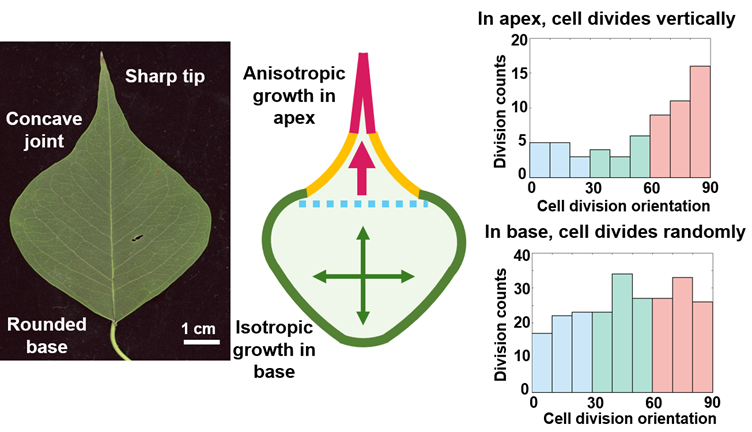Some plant leaves possess sharp apices, and their existence has been documented for centuries. Various ecological functions have been proposed, but the developmental mechanisms underlying these features have long remained unclear.
Recently, Tsukaya lab published a paper to clarify cellular mechanisms behind sharp formation. Focusing on the leaves of the Chinese tallow tree (Triadica sebifera), which exhibits elongated sharp apices, we observed leaf morphology as well as patterns of cell behaviors. As a result, we found that cell division angles were biased toward the sharp apex, whereas uniform cell division angles were observed at the leaf base. Furthermore, computer simulations based on these observed patterns successfully reproduced the sharp-tipped leaf shape.
These findings demonstrate that the regionally differentiated orientation of cell division plays a key role in the formation of sharp apices in leaves.
For additional information, refer to the press release and the article.

